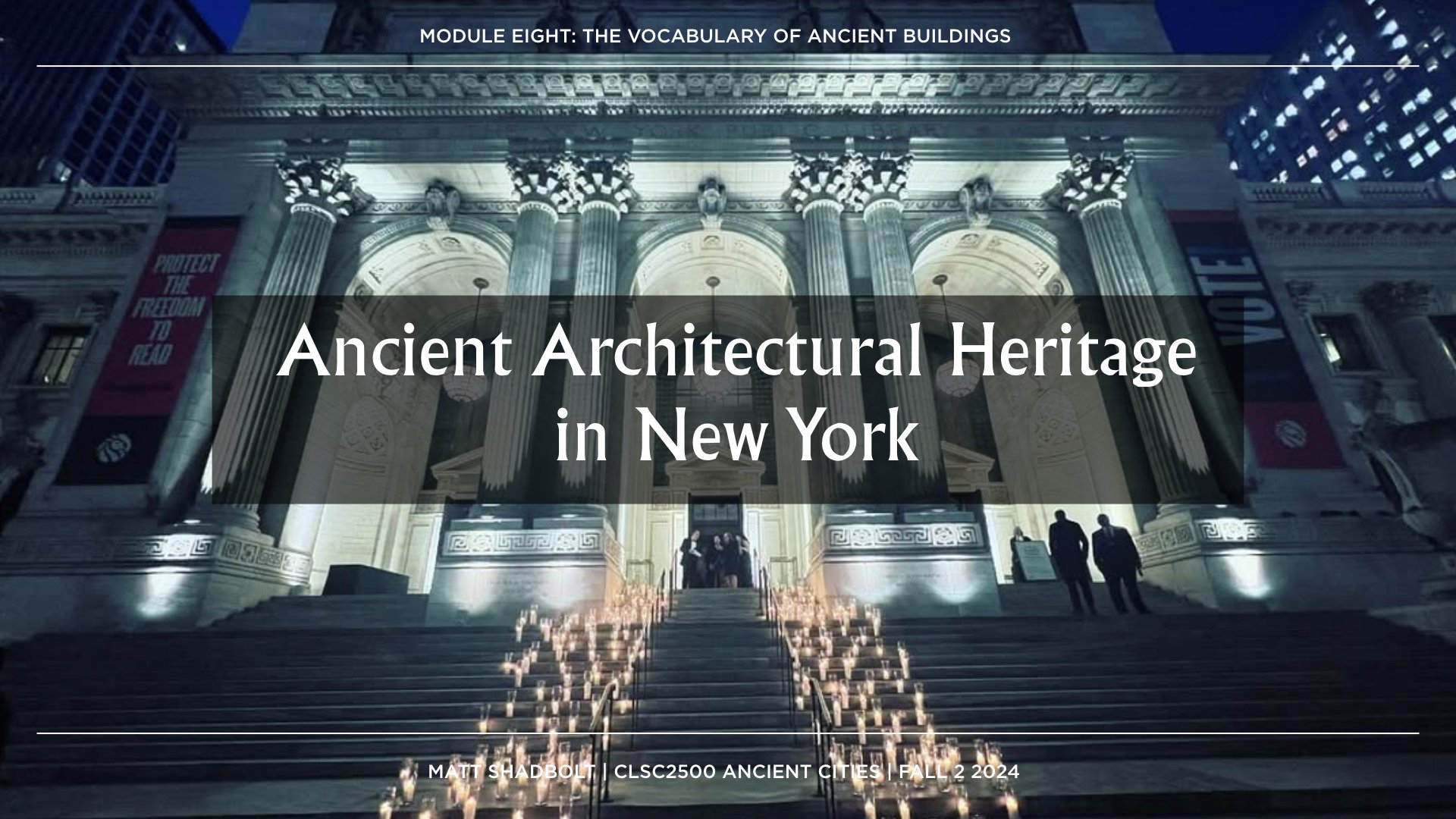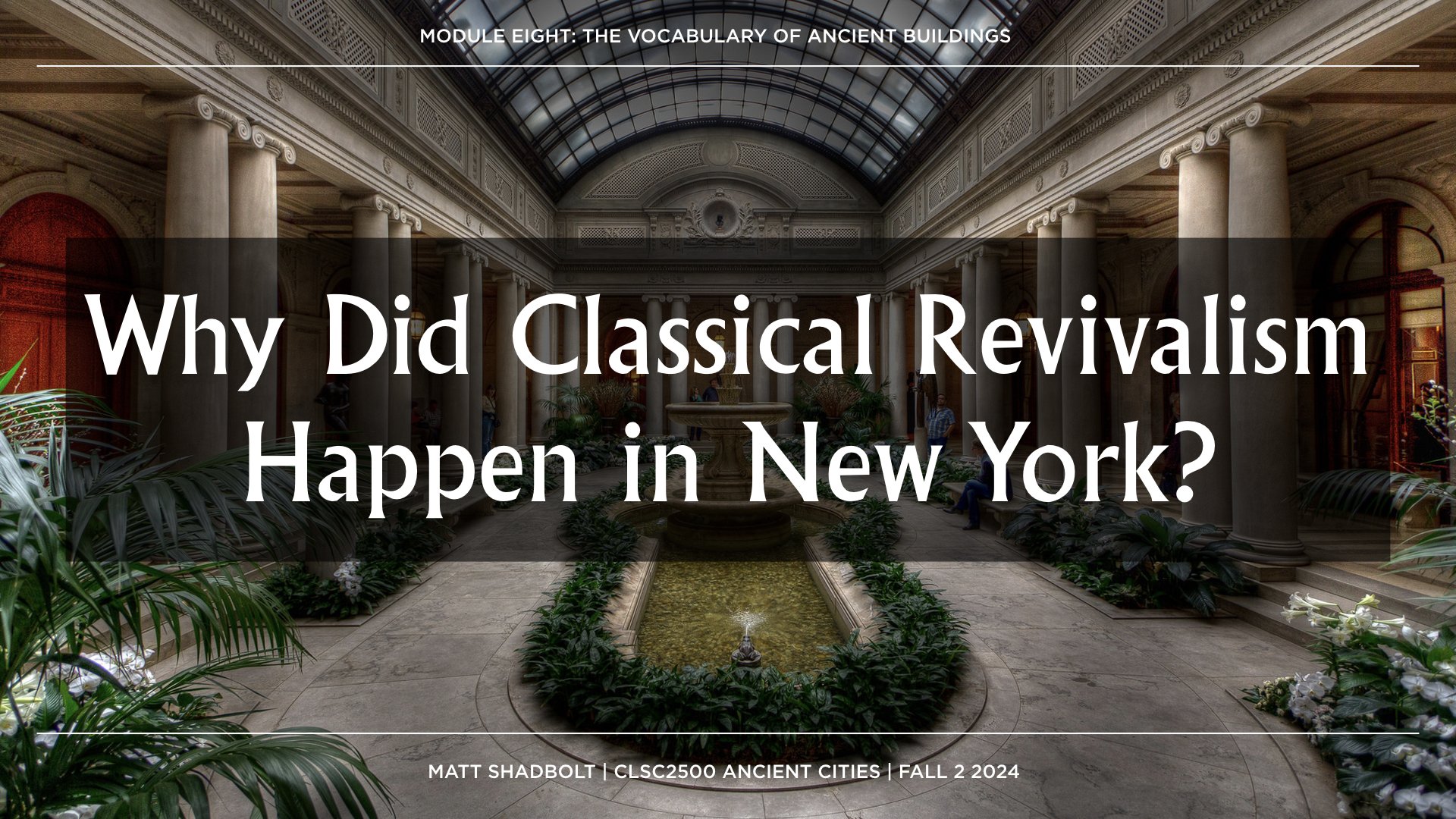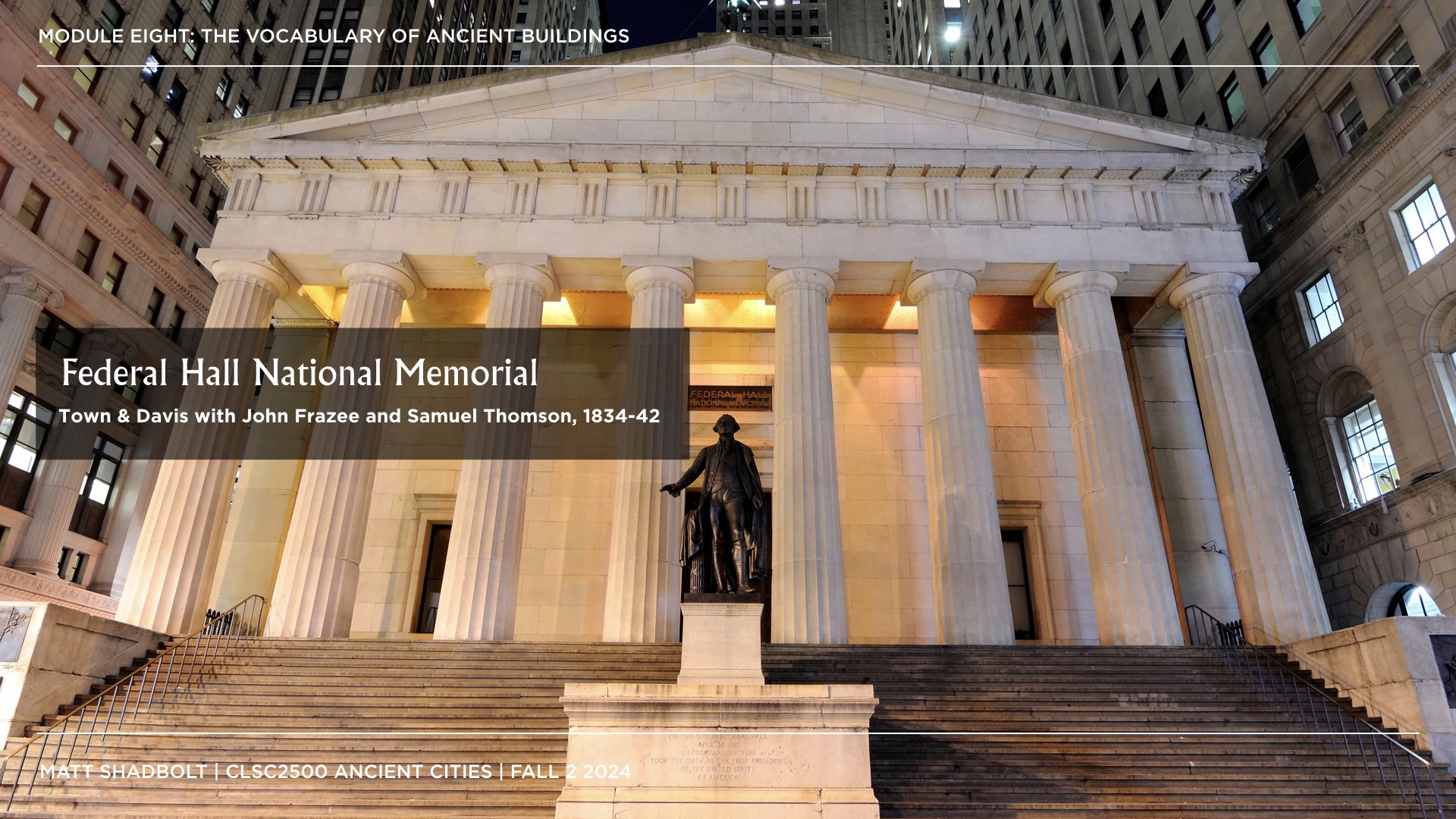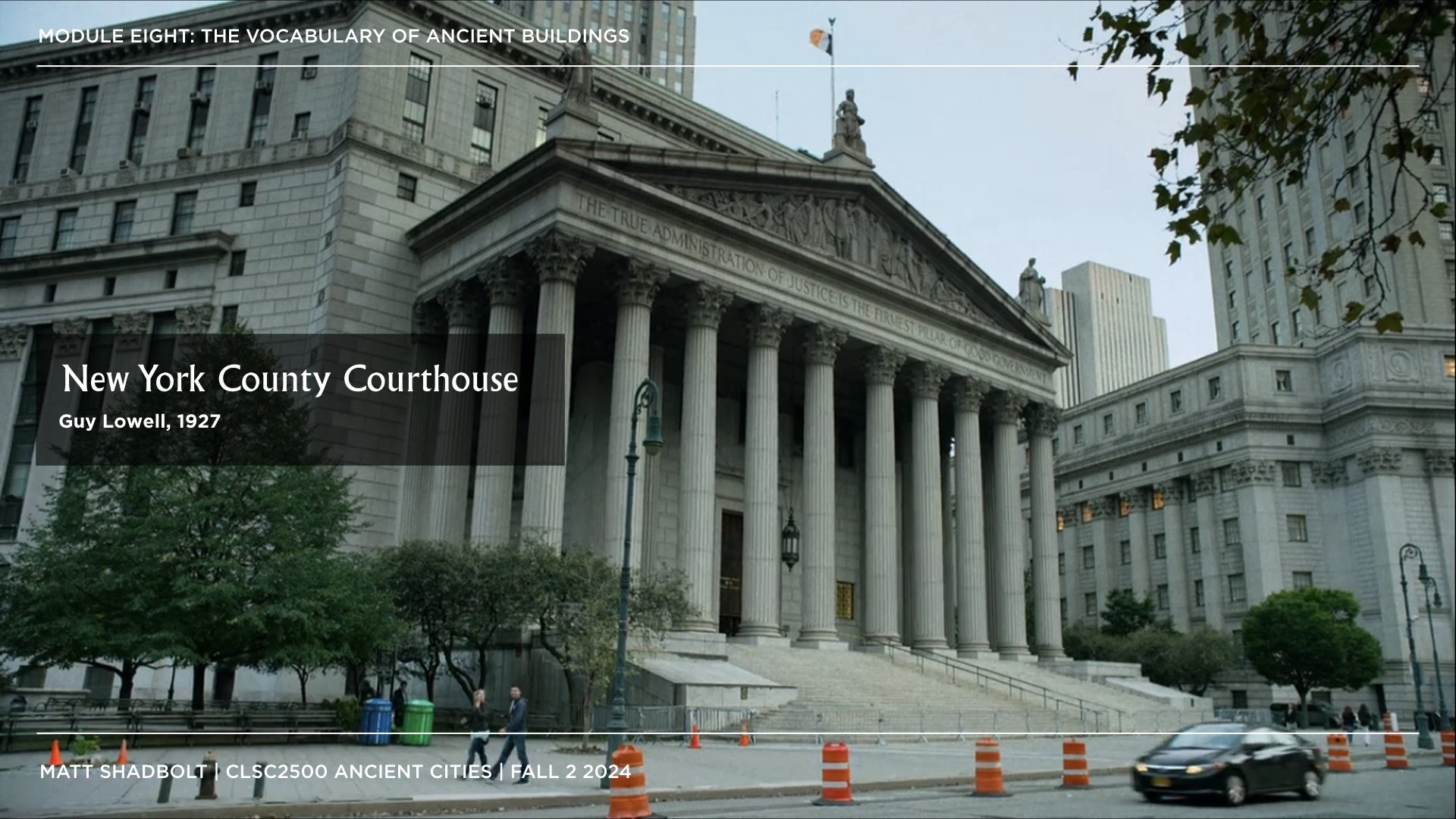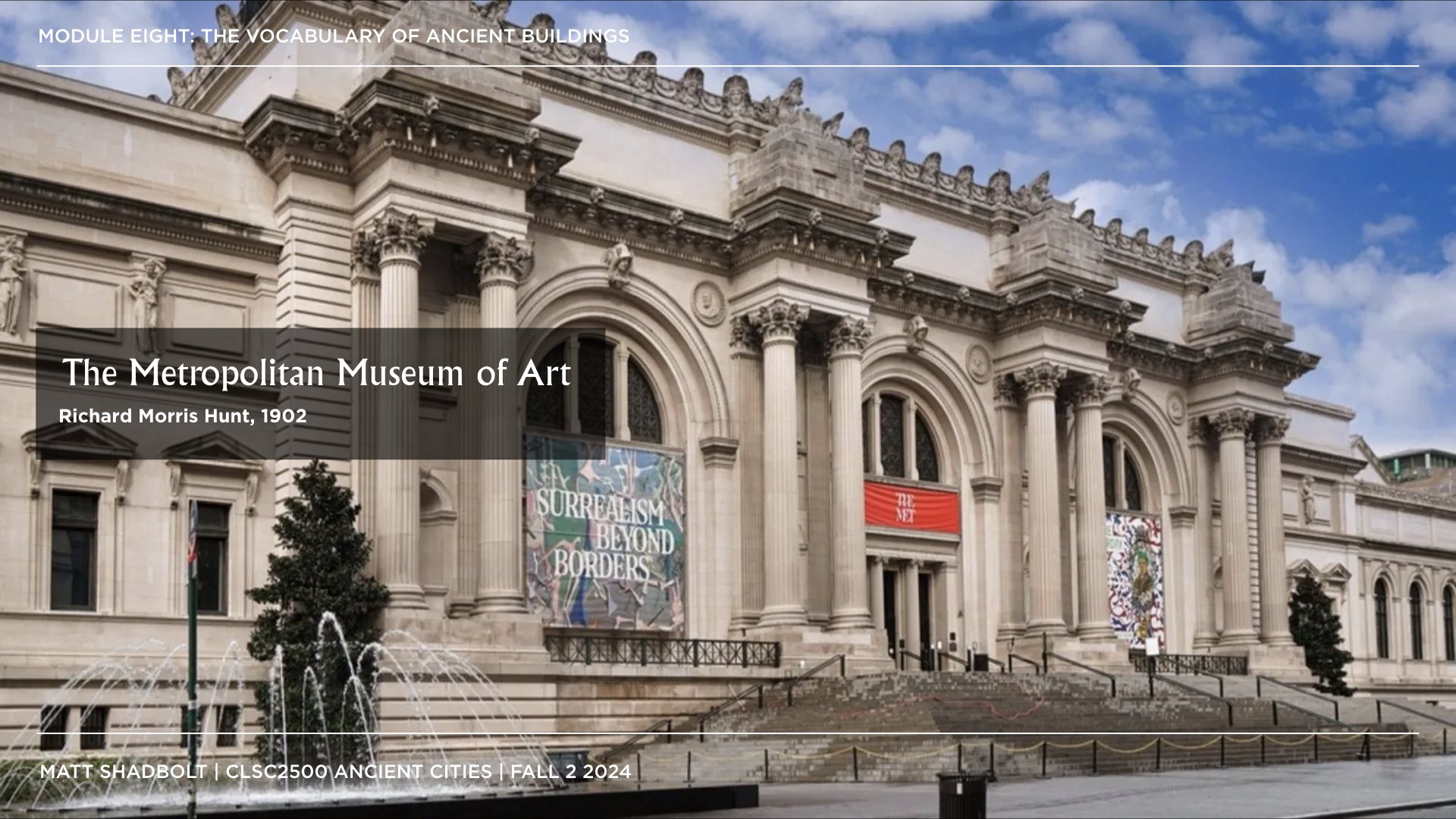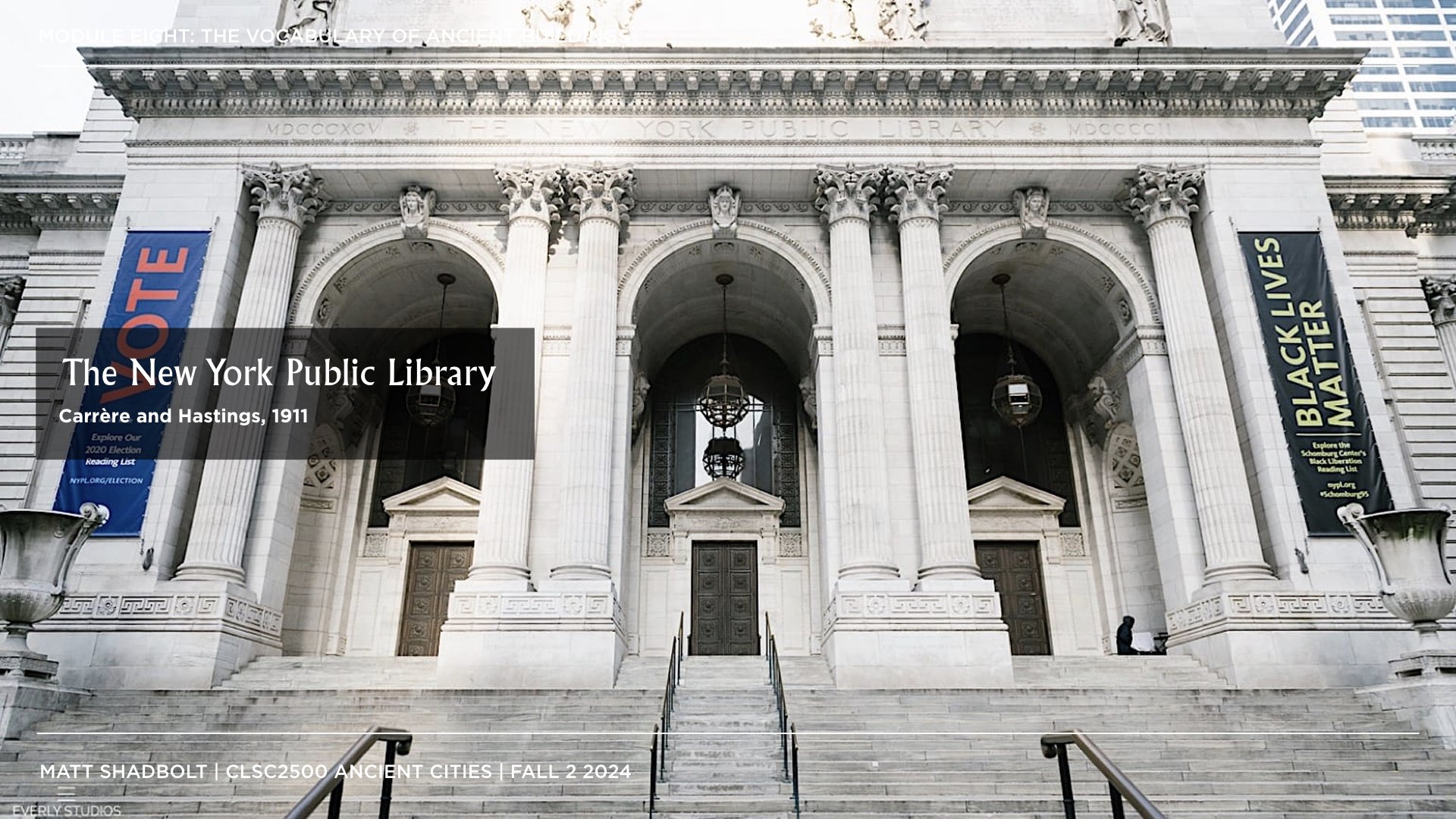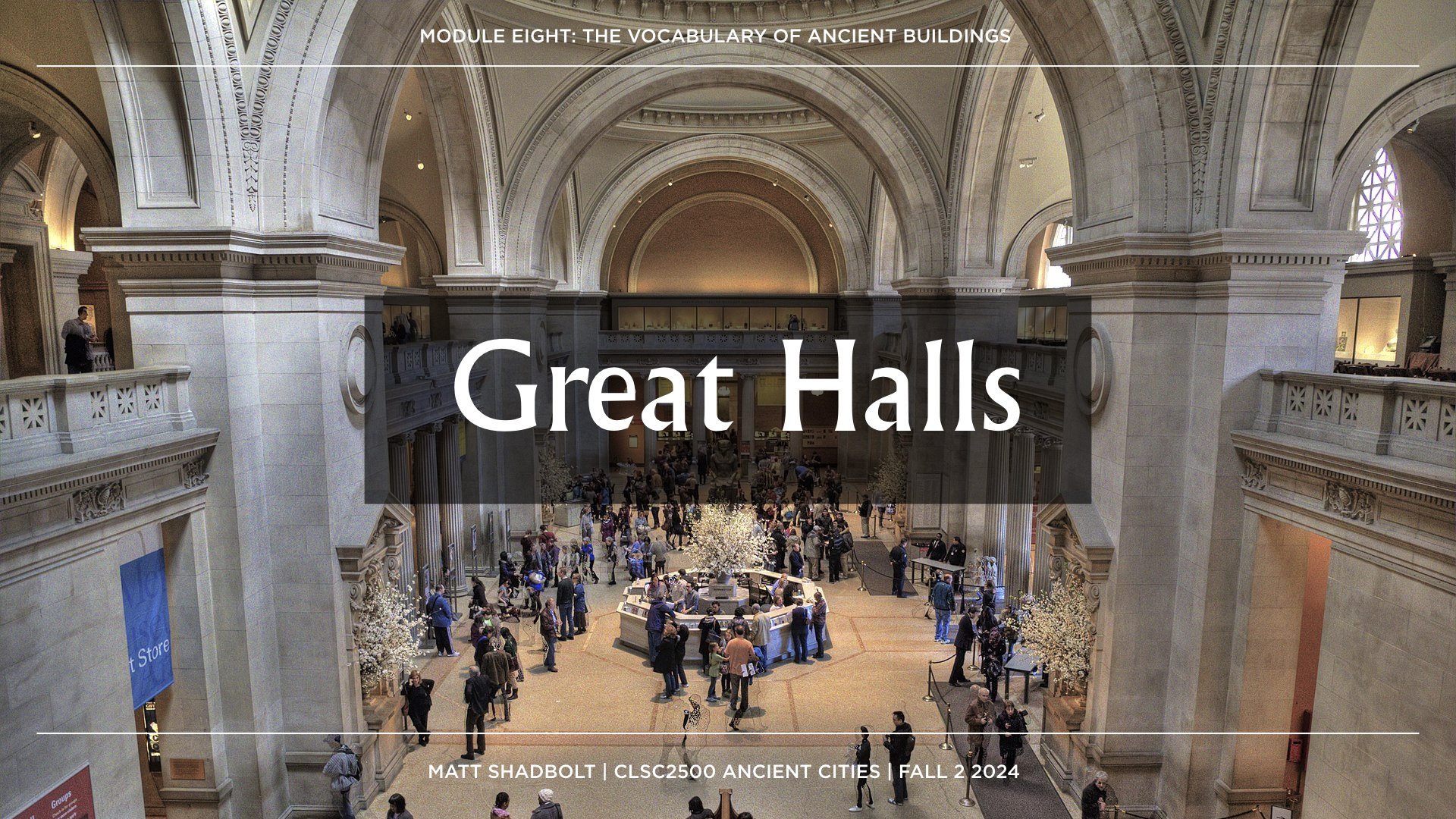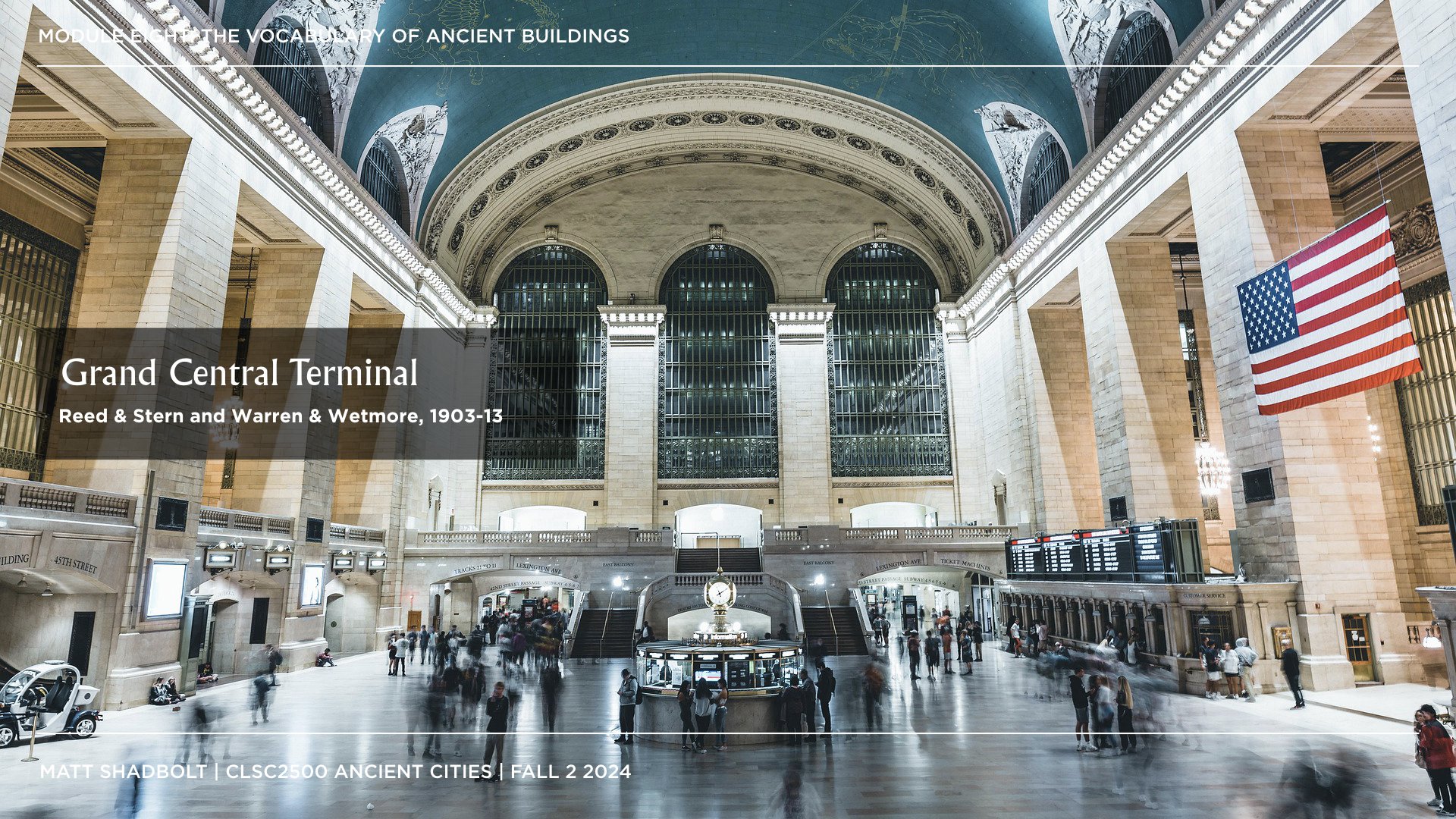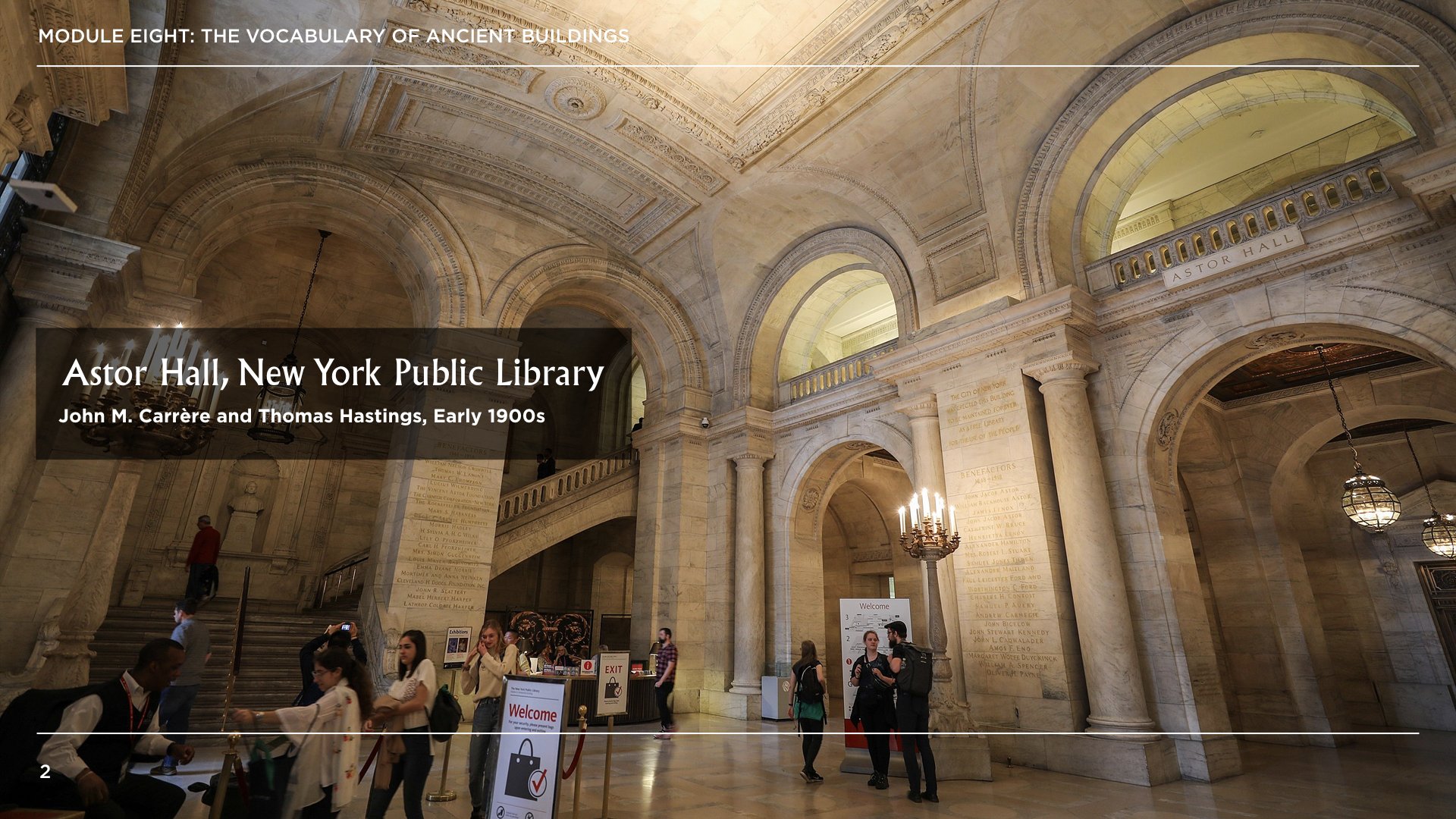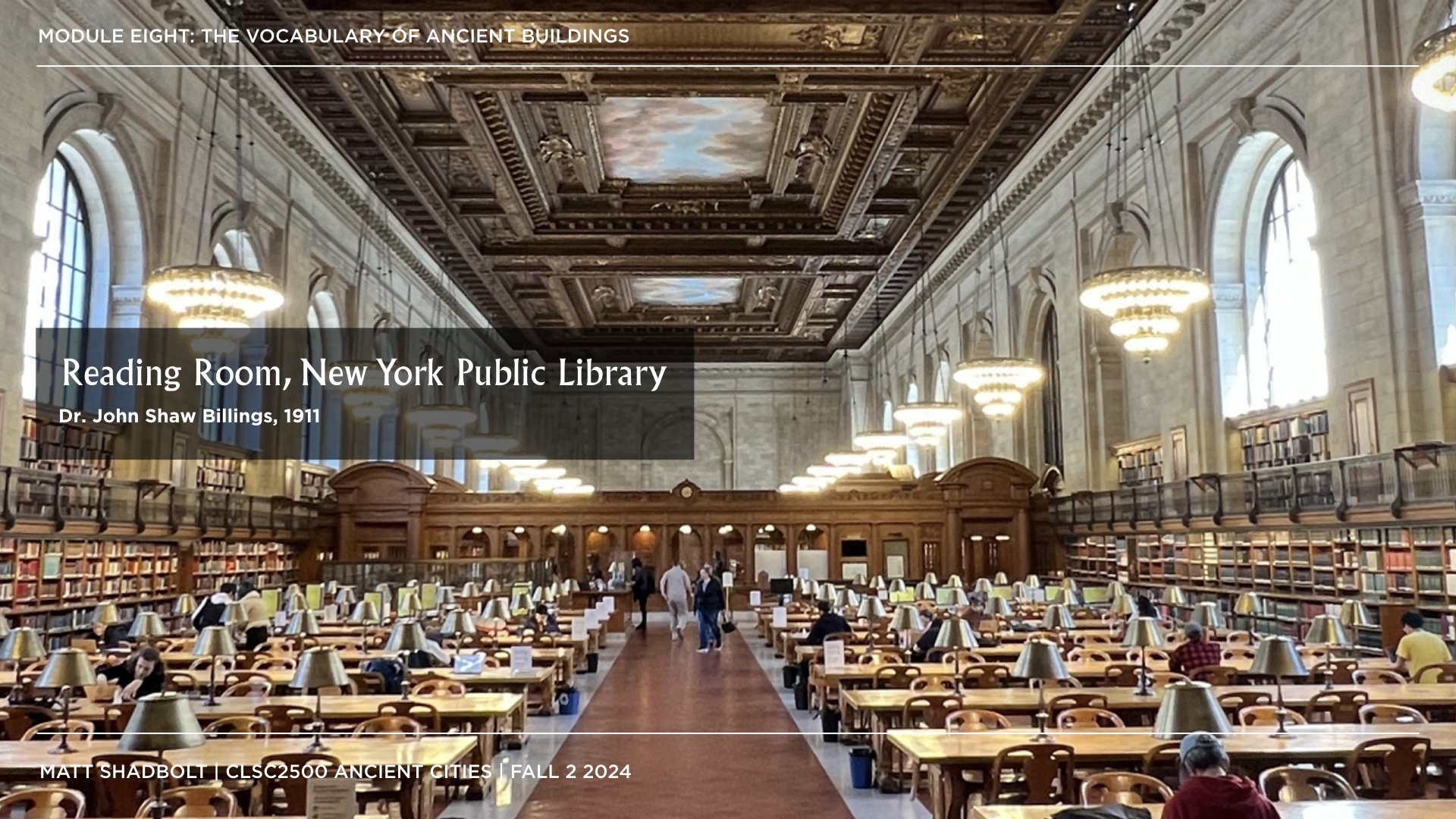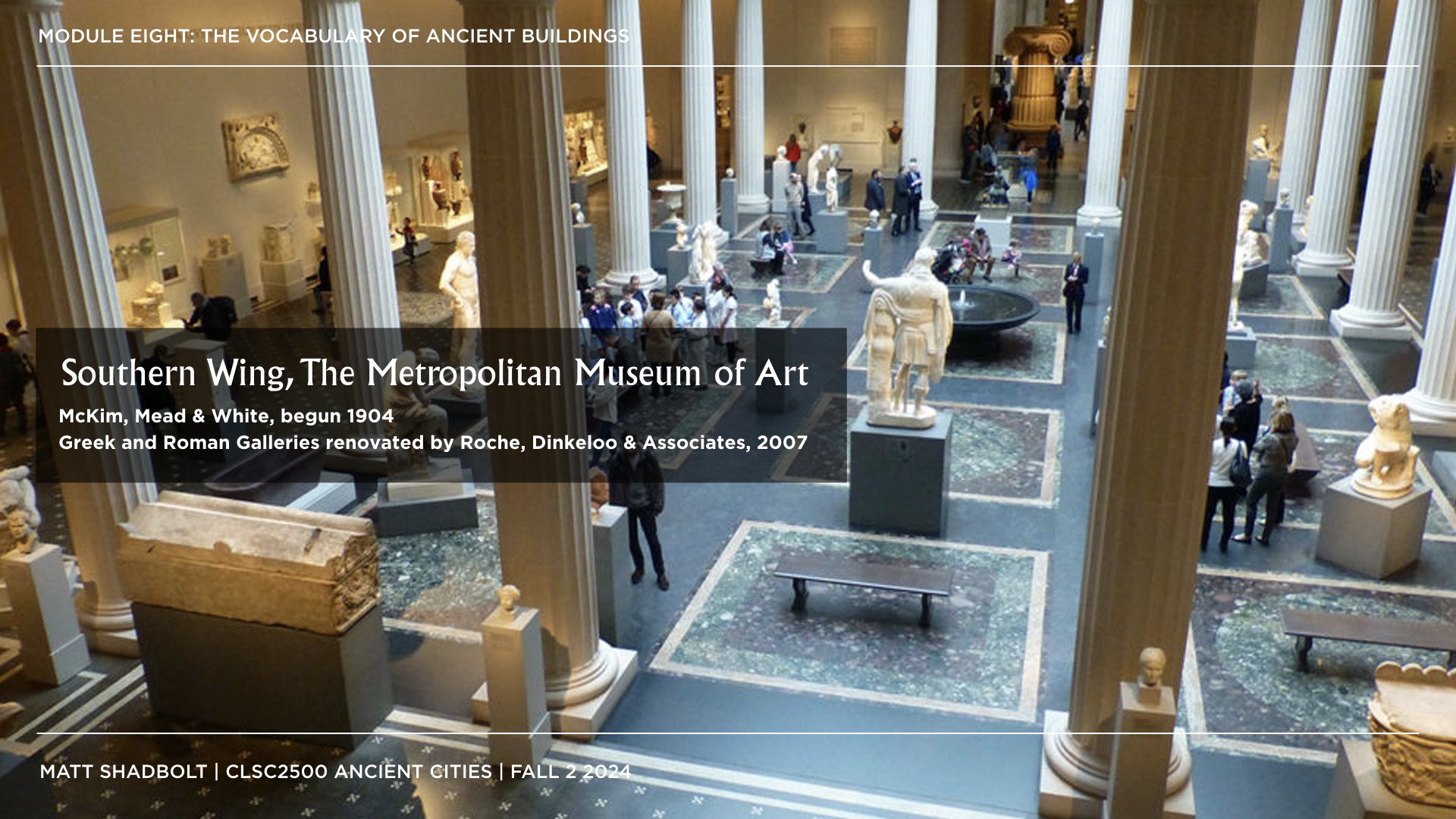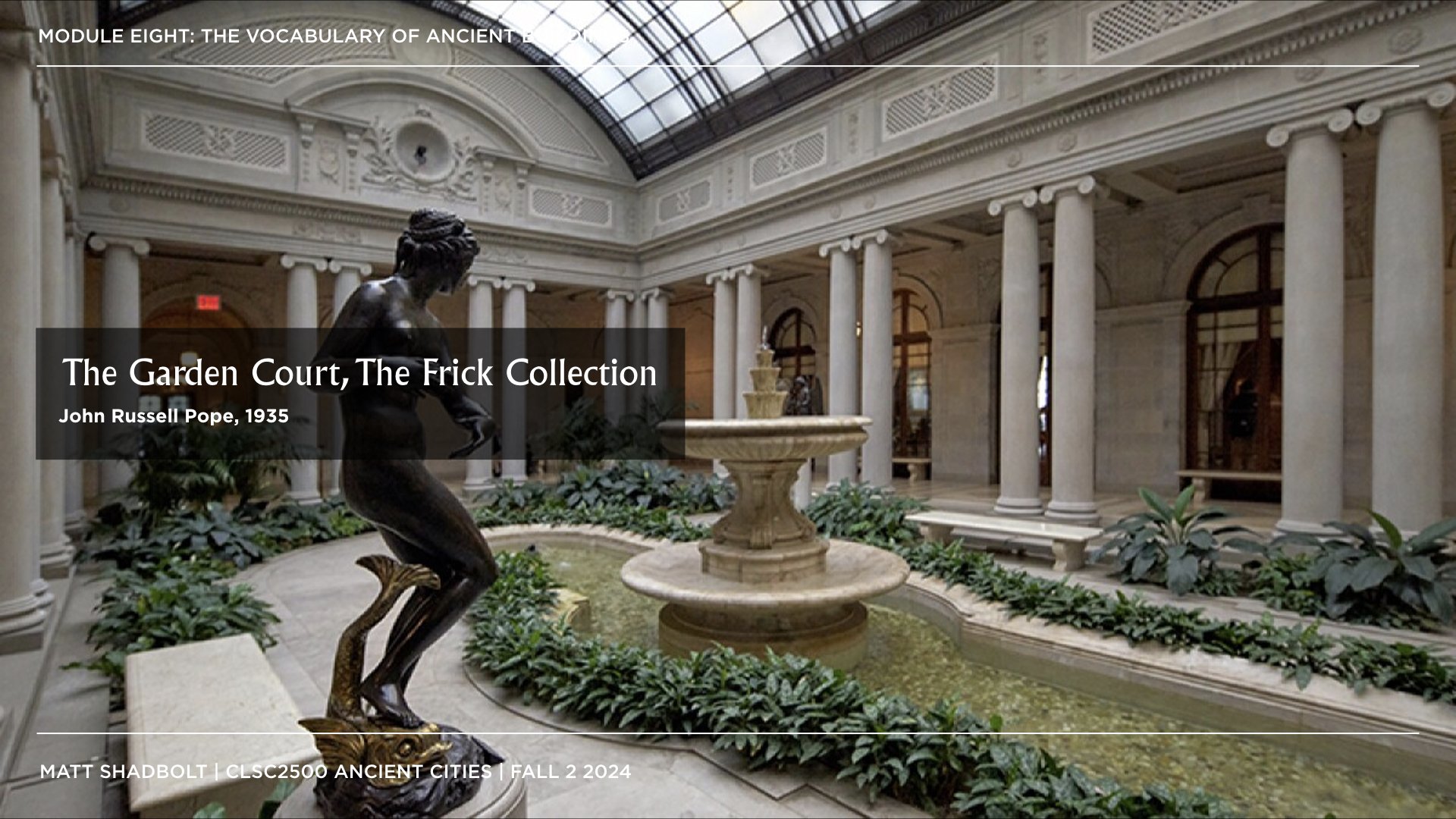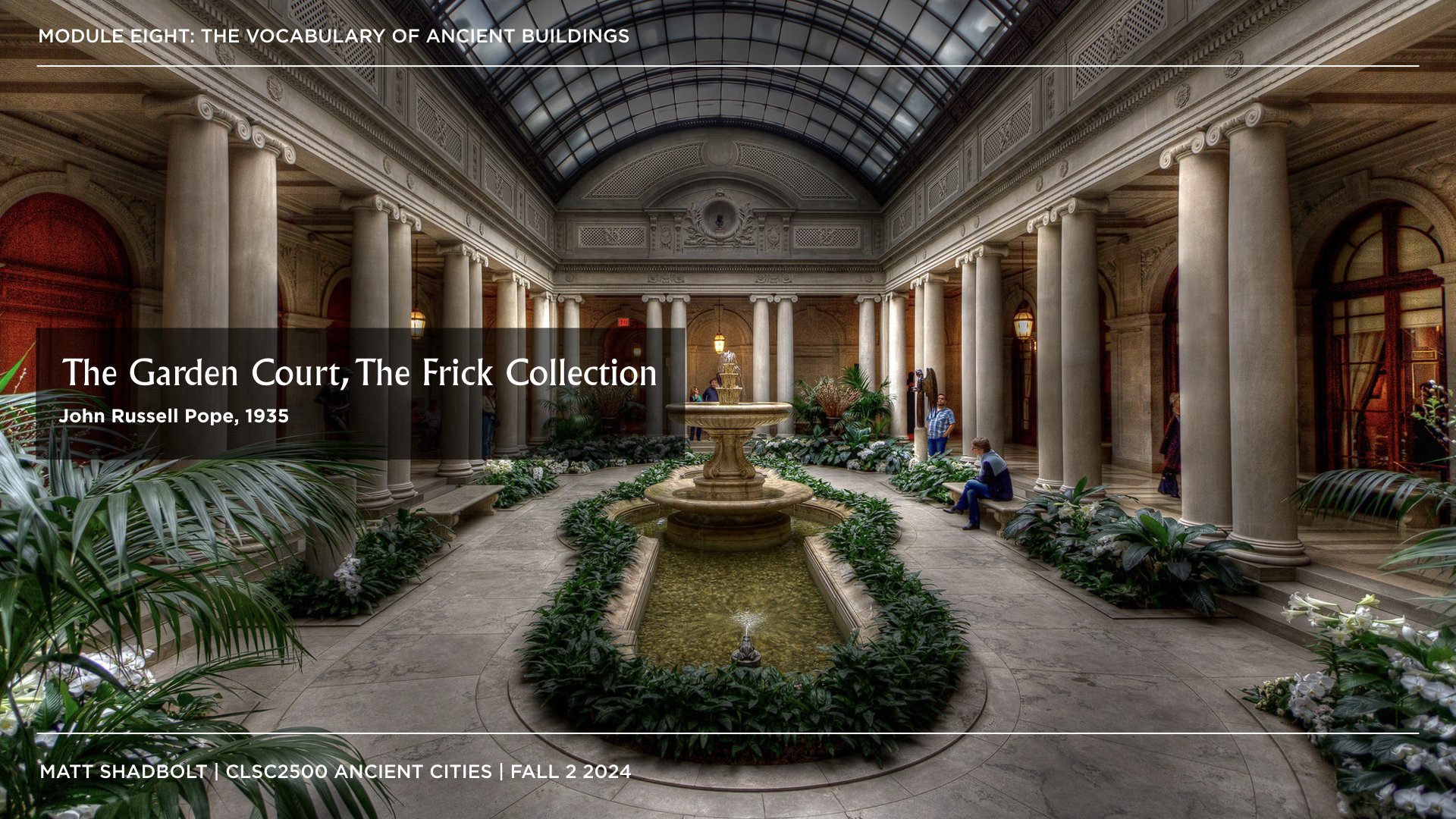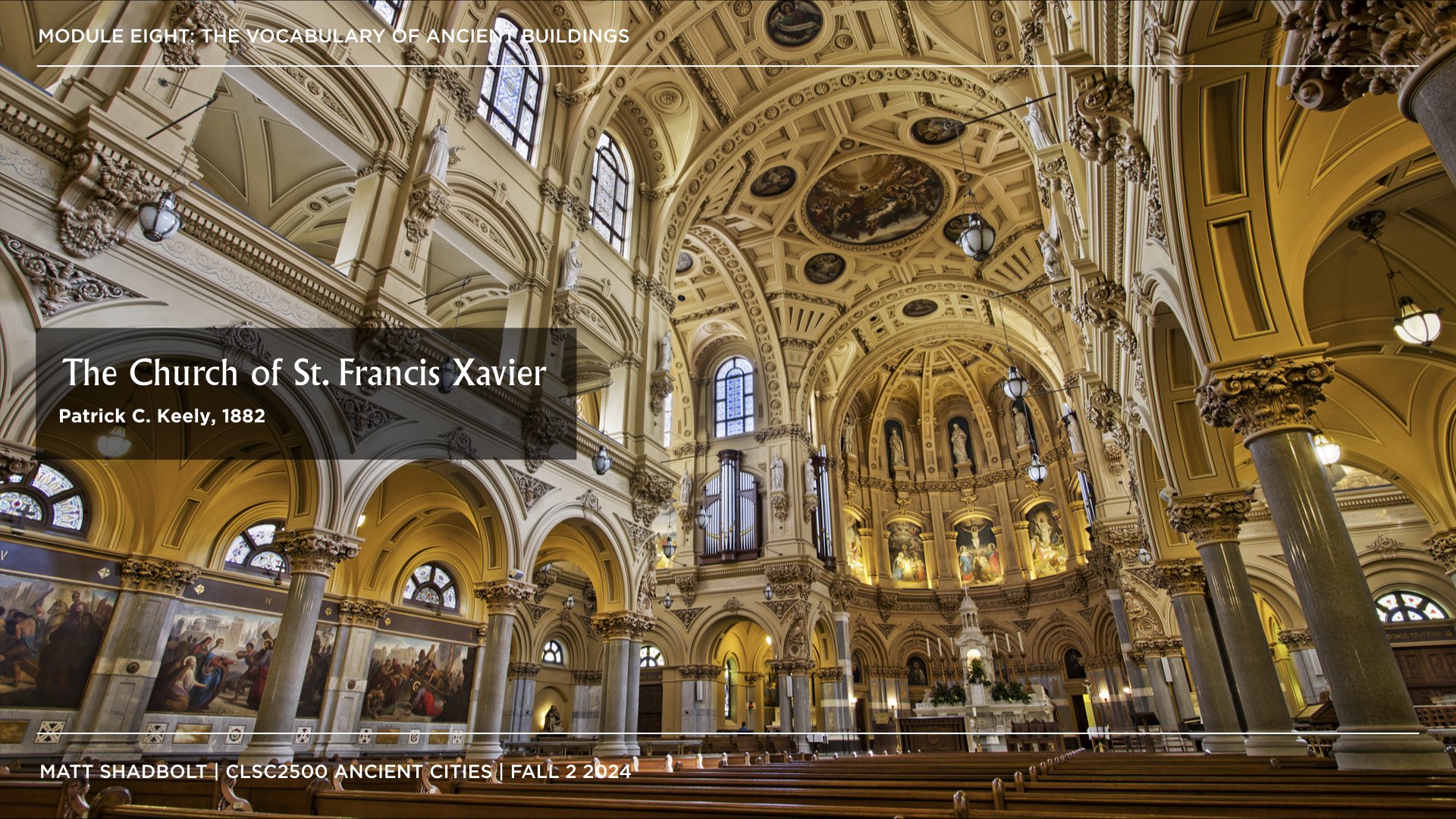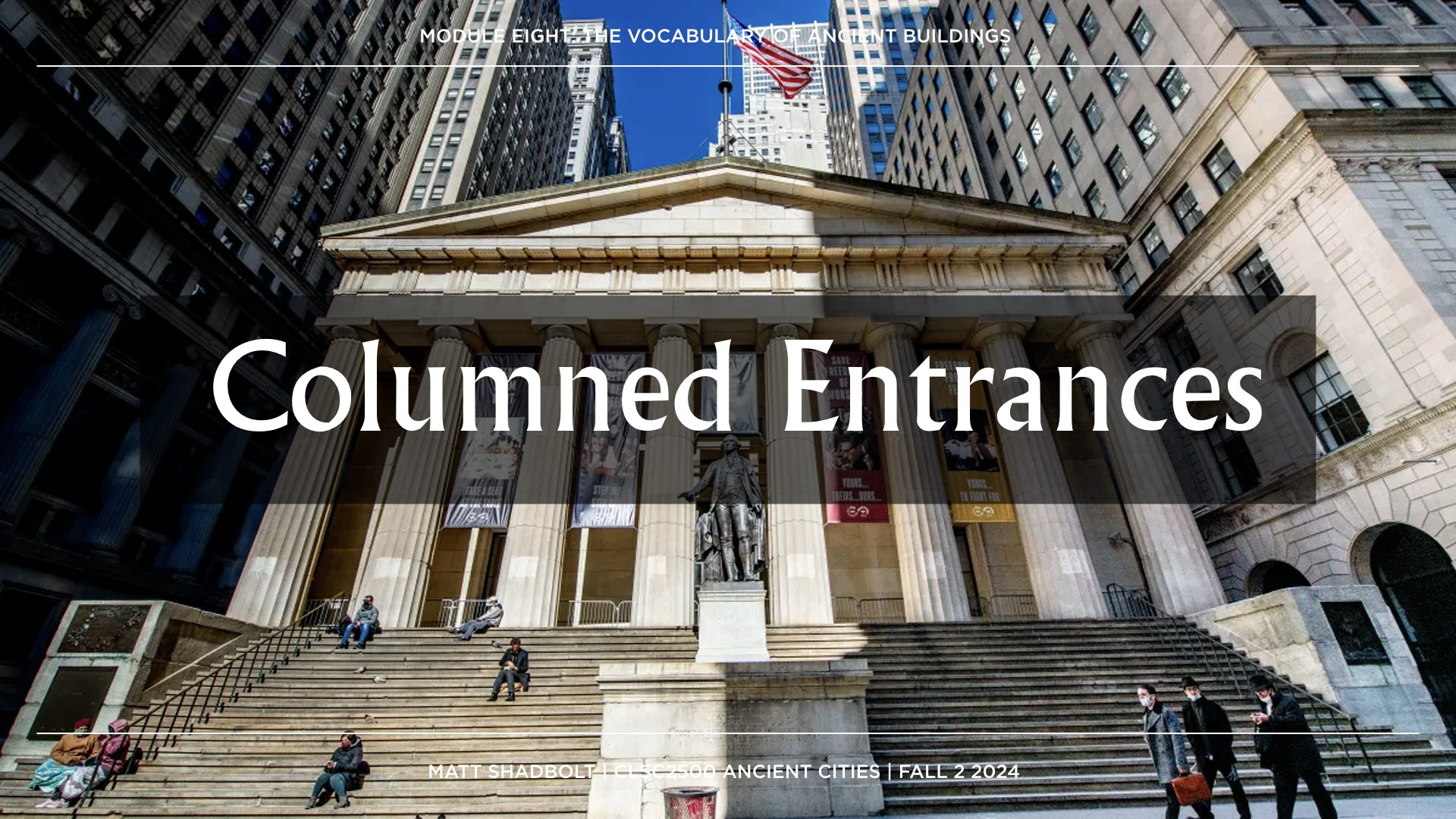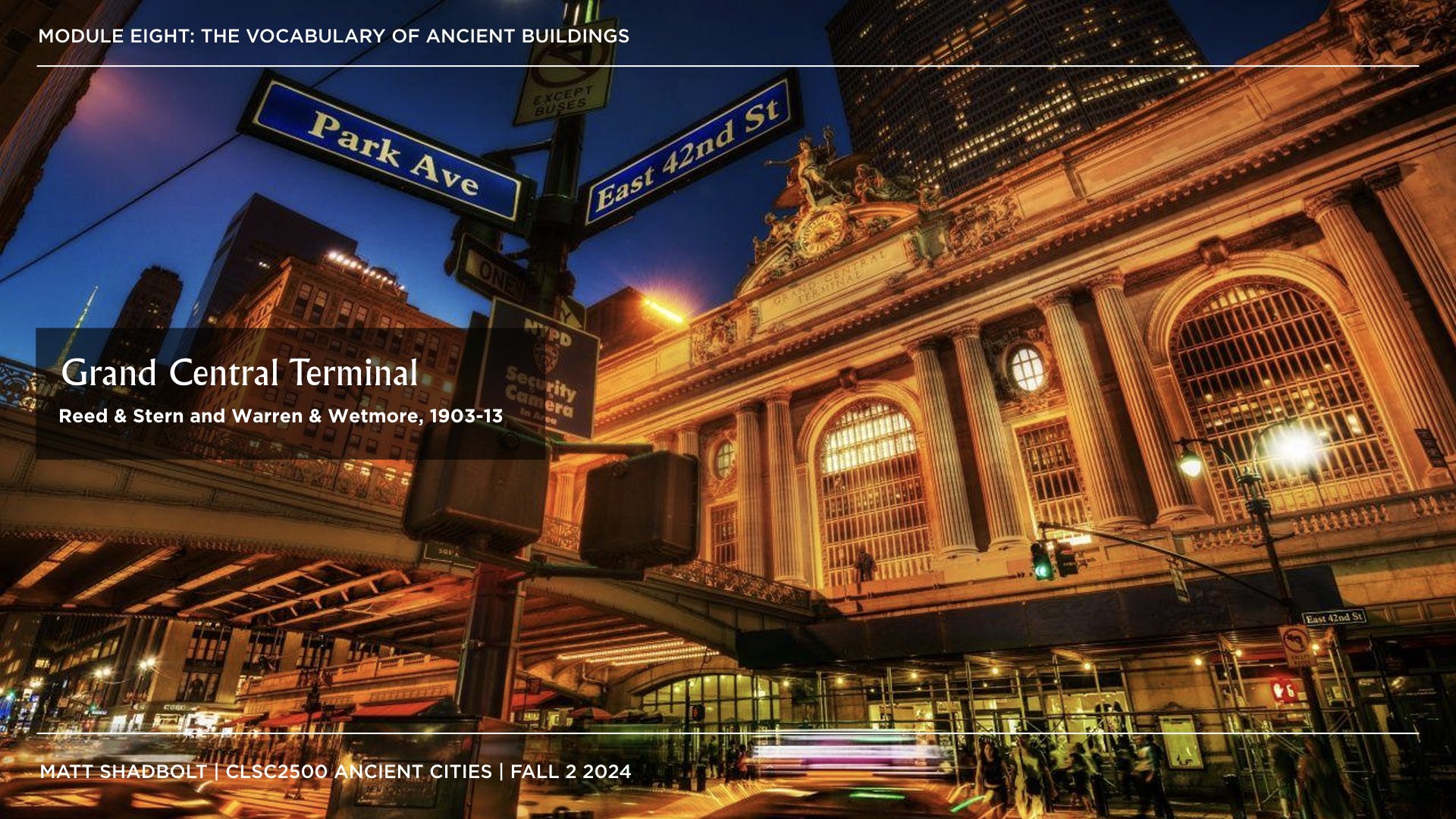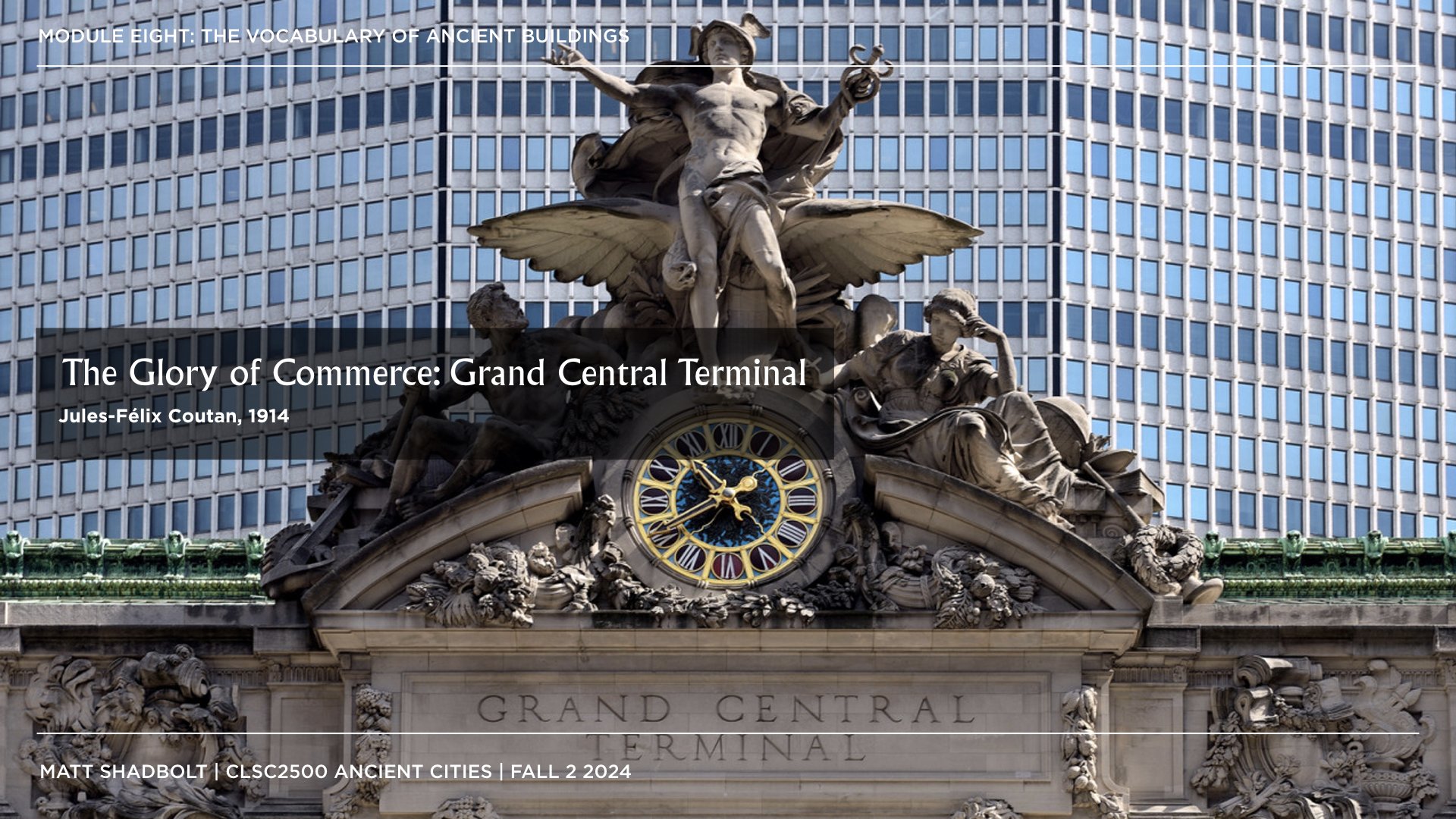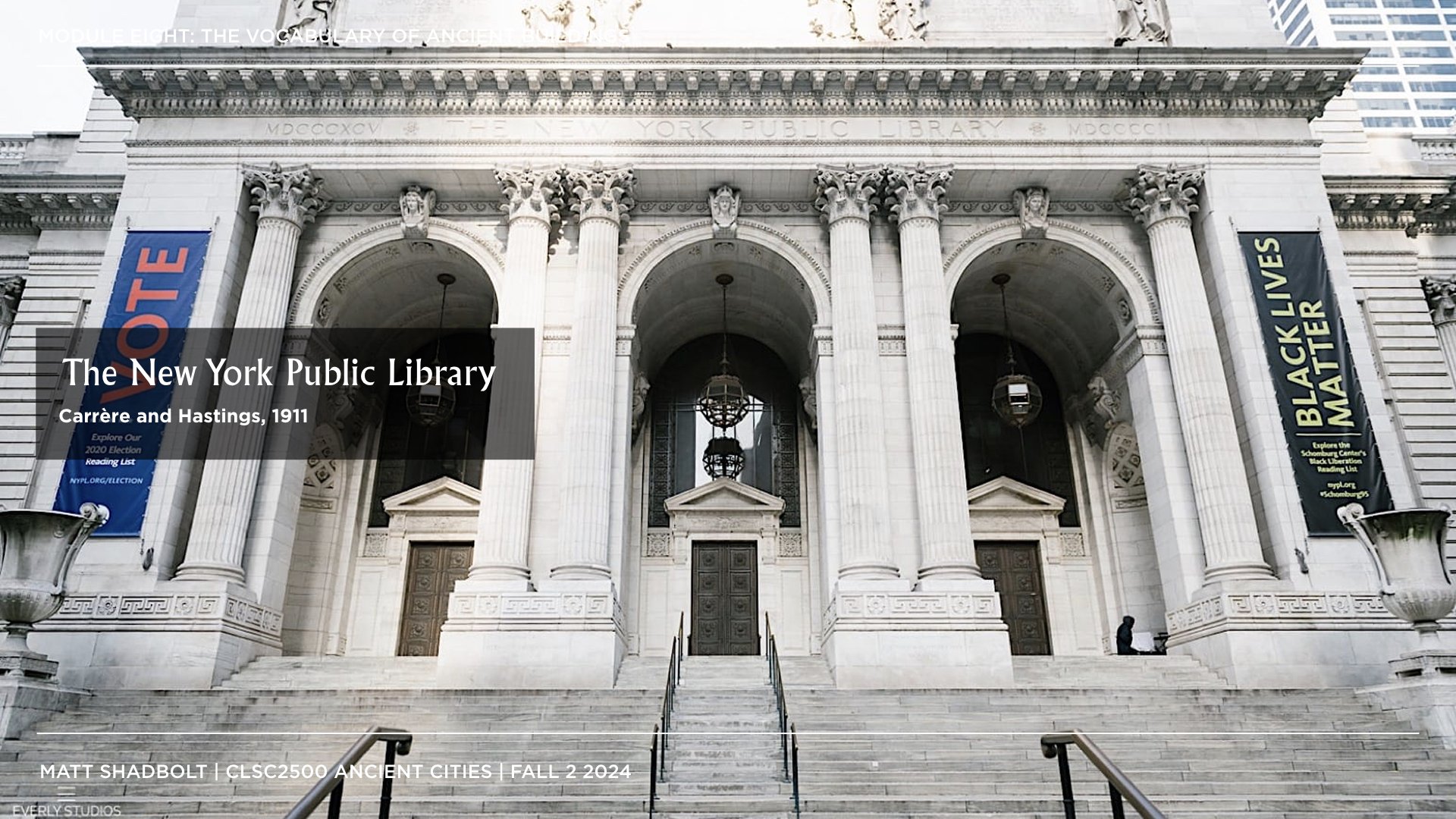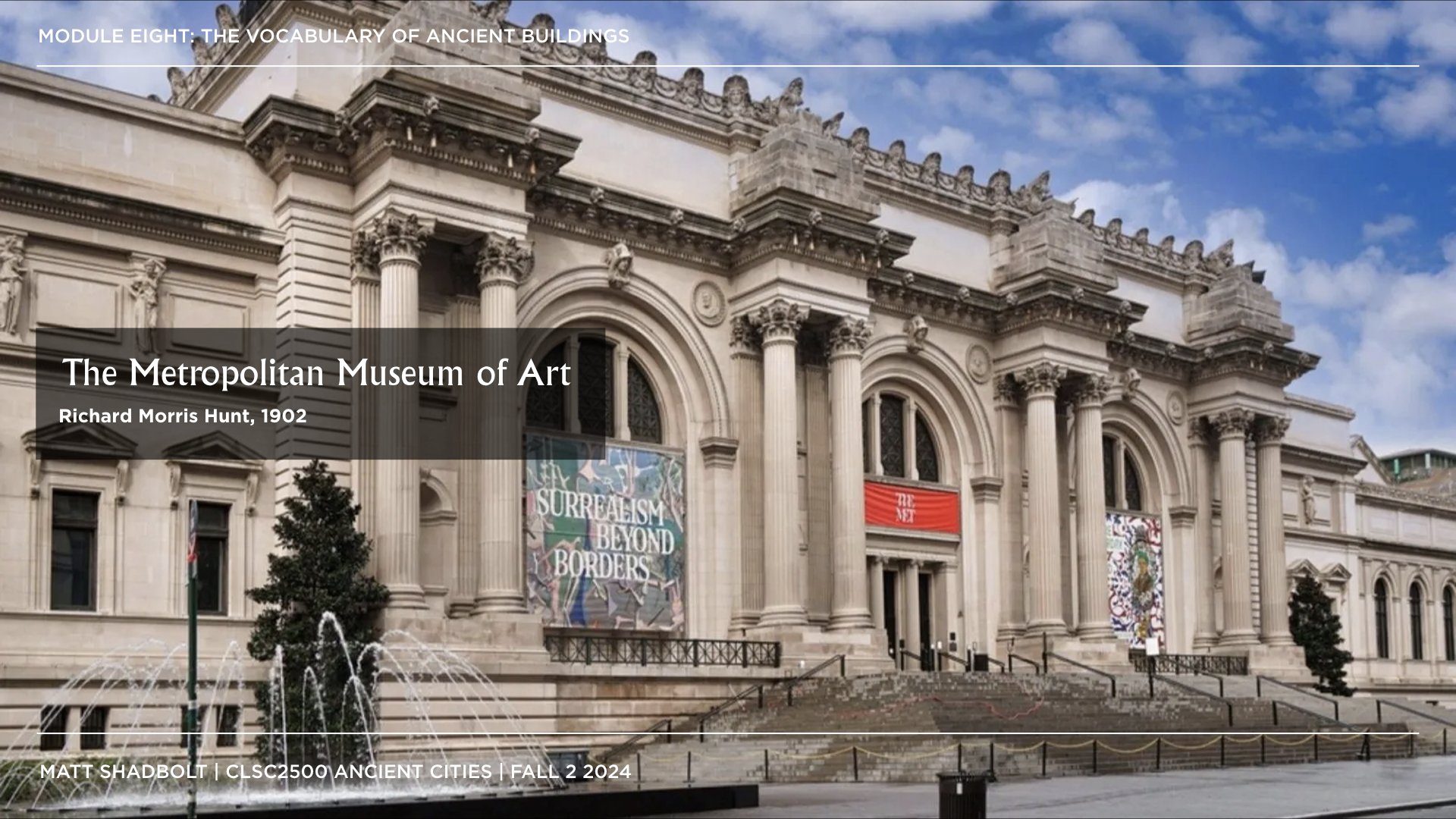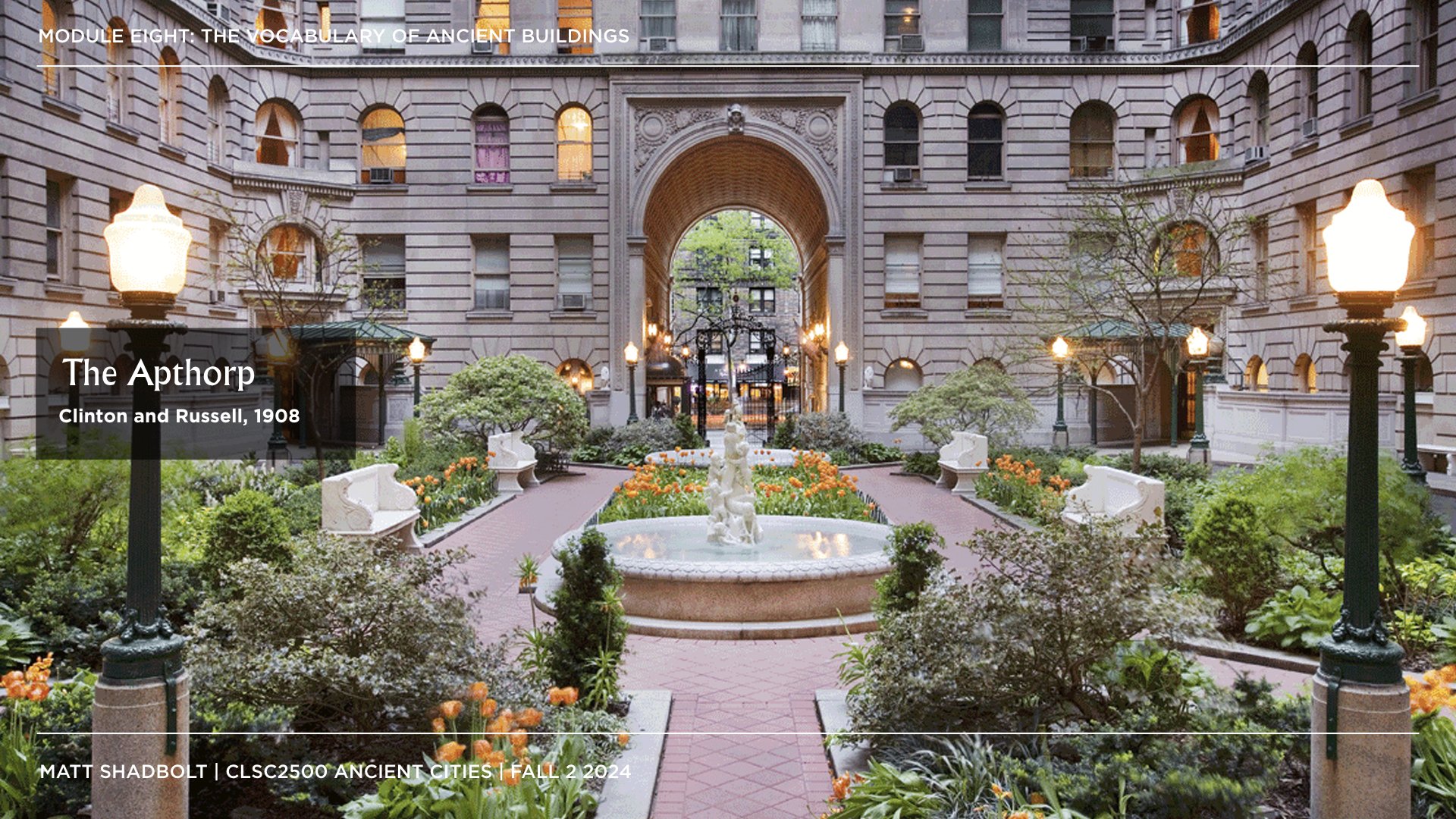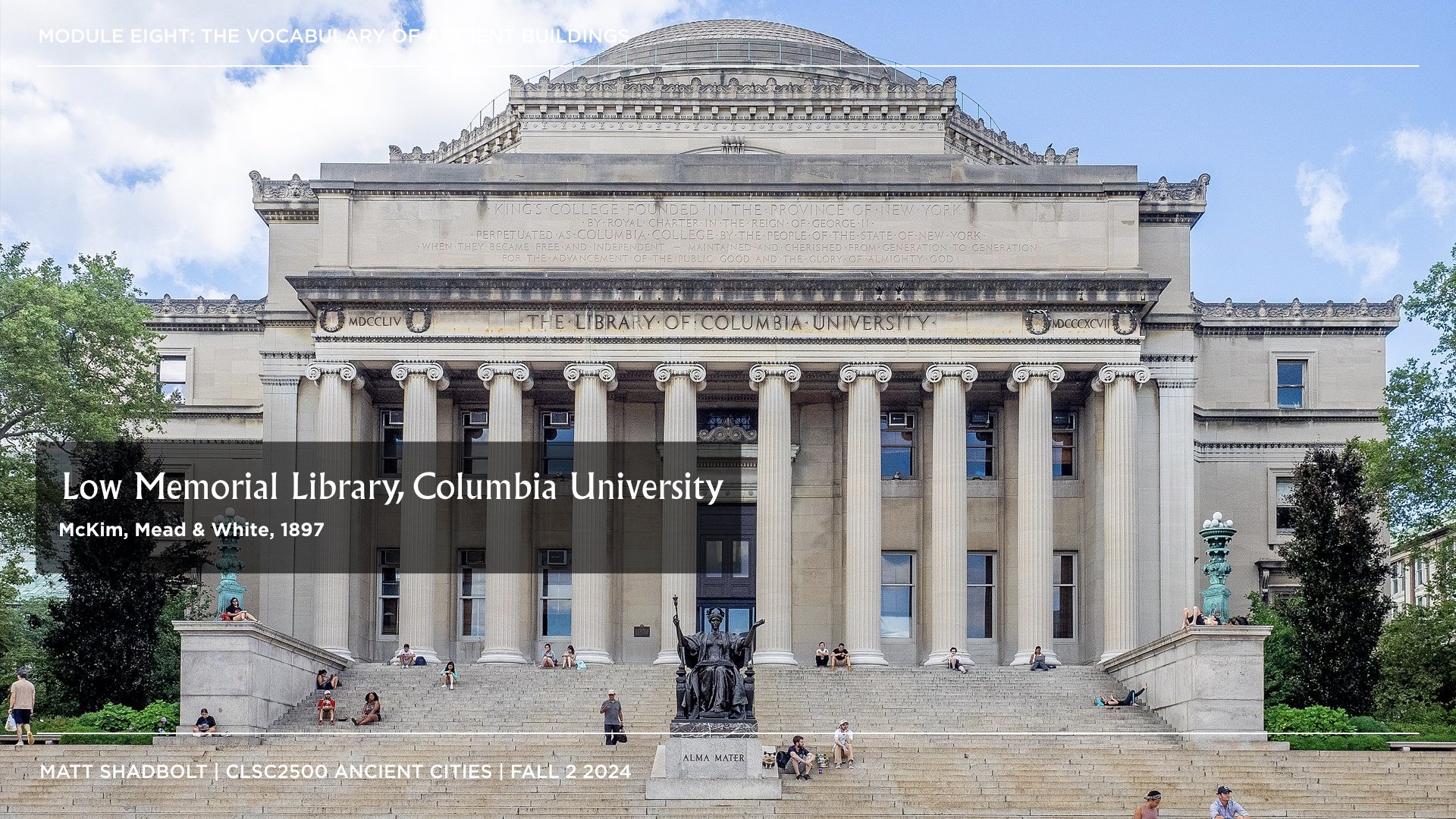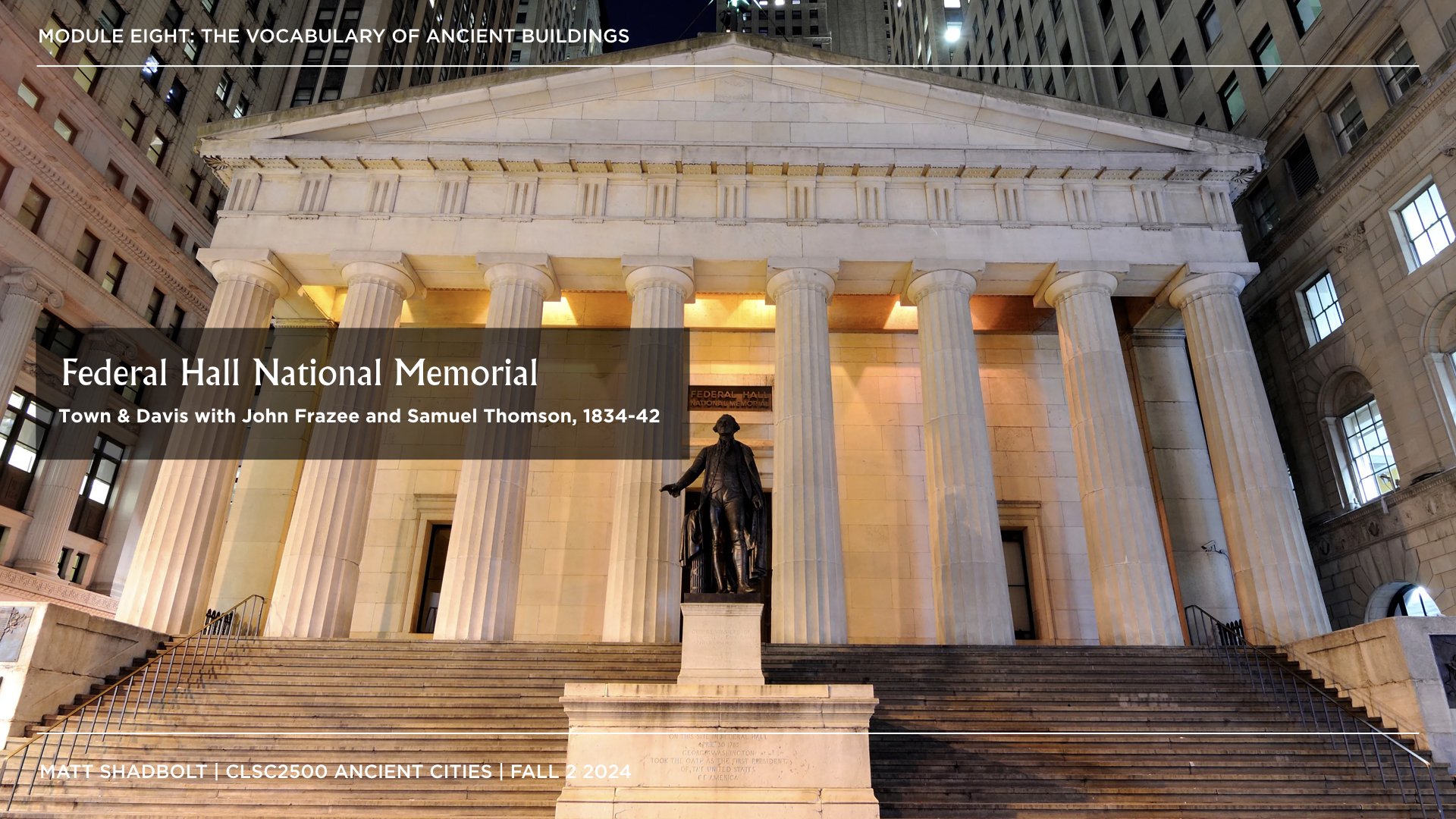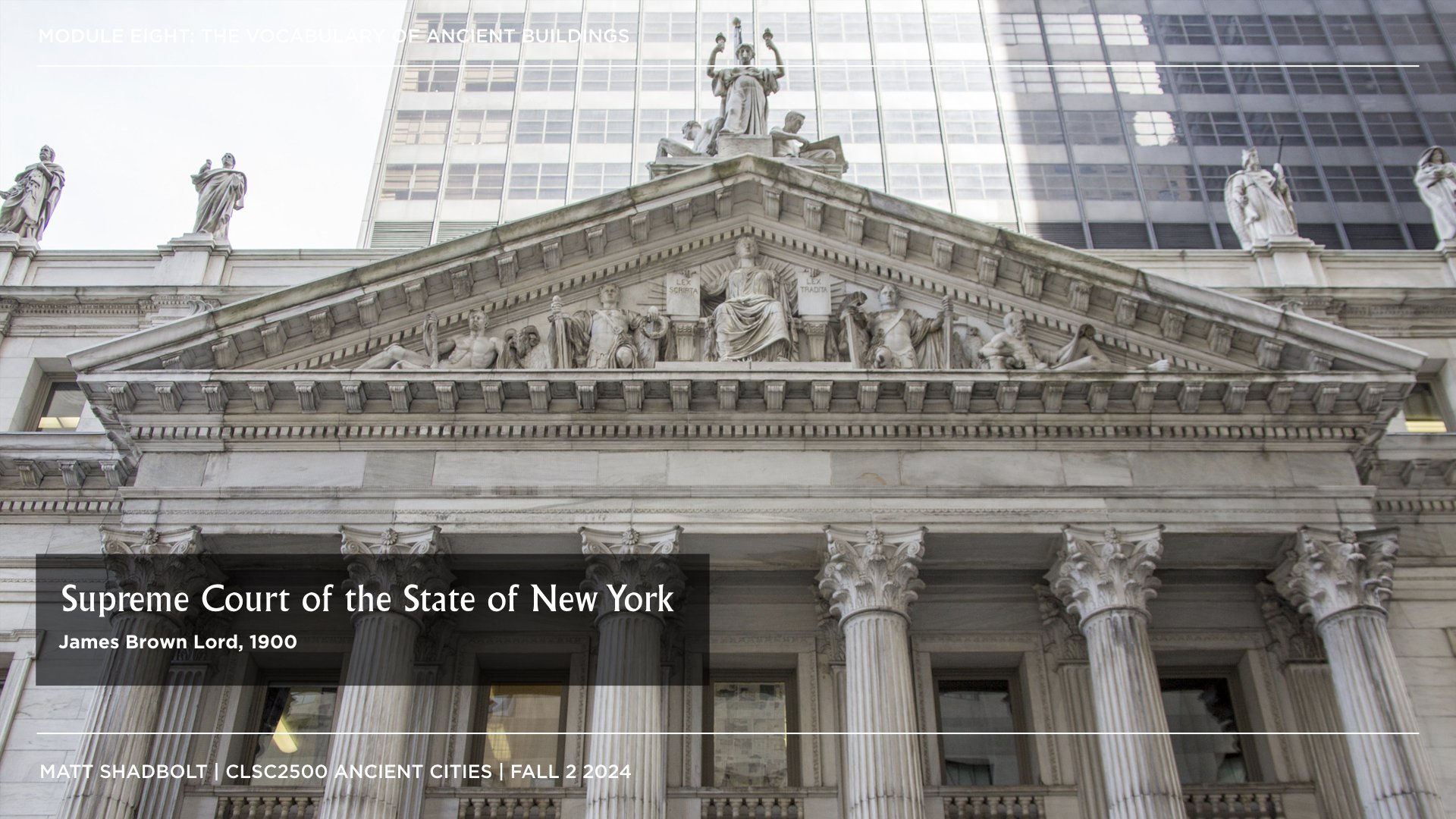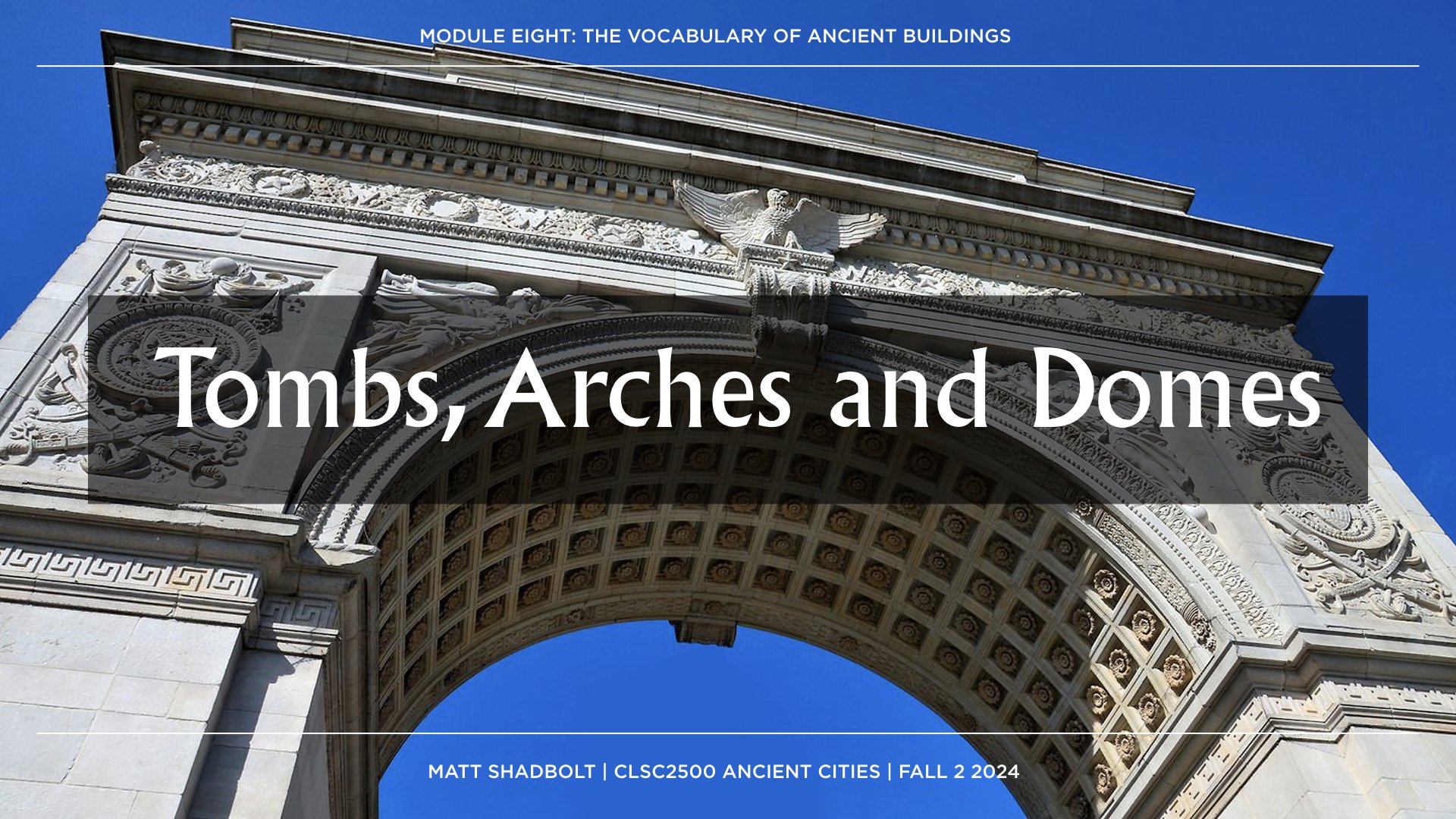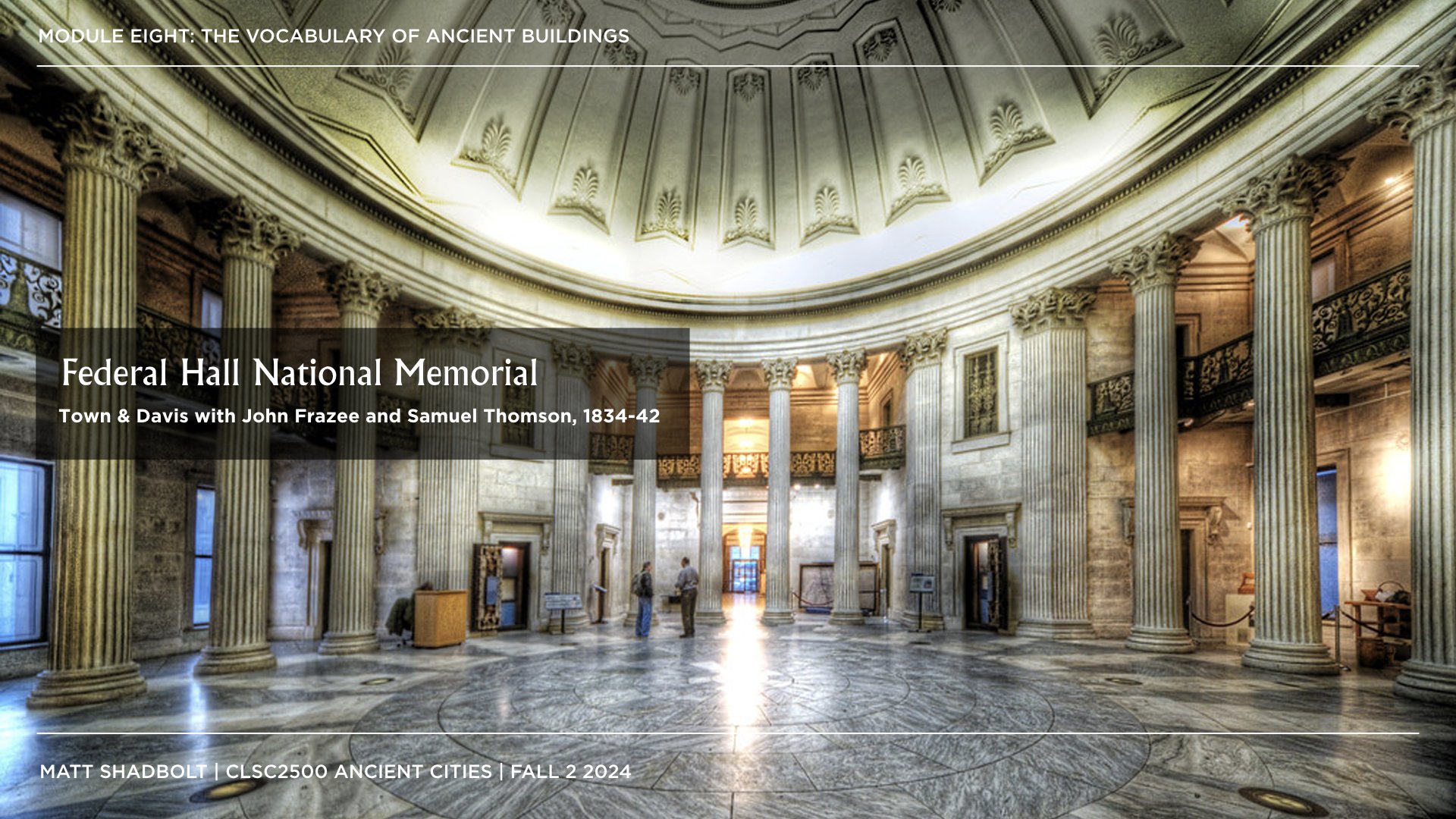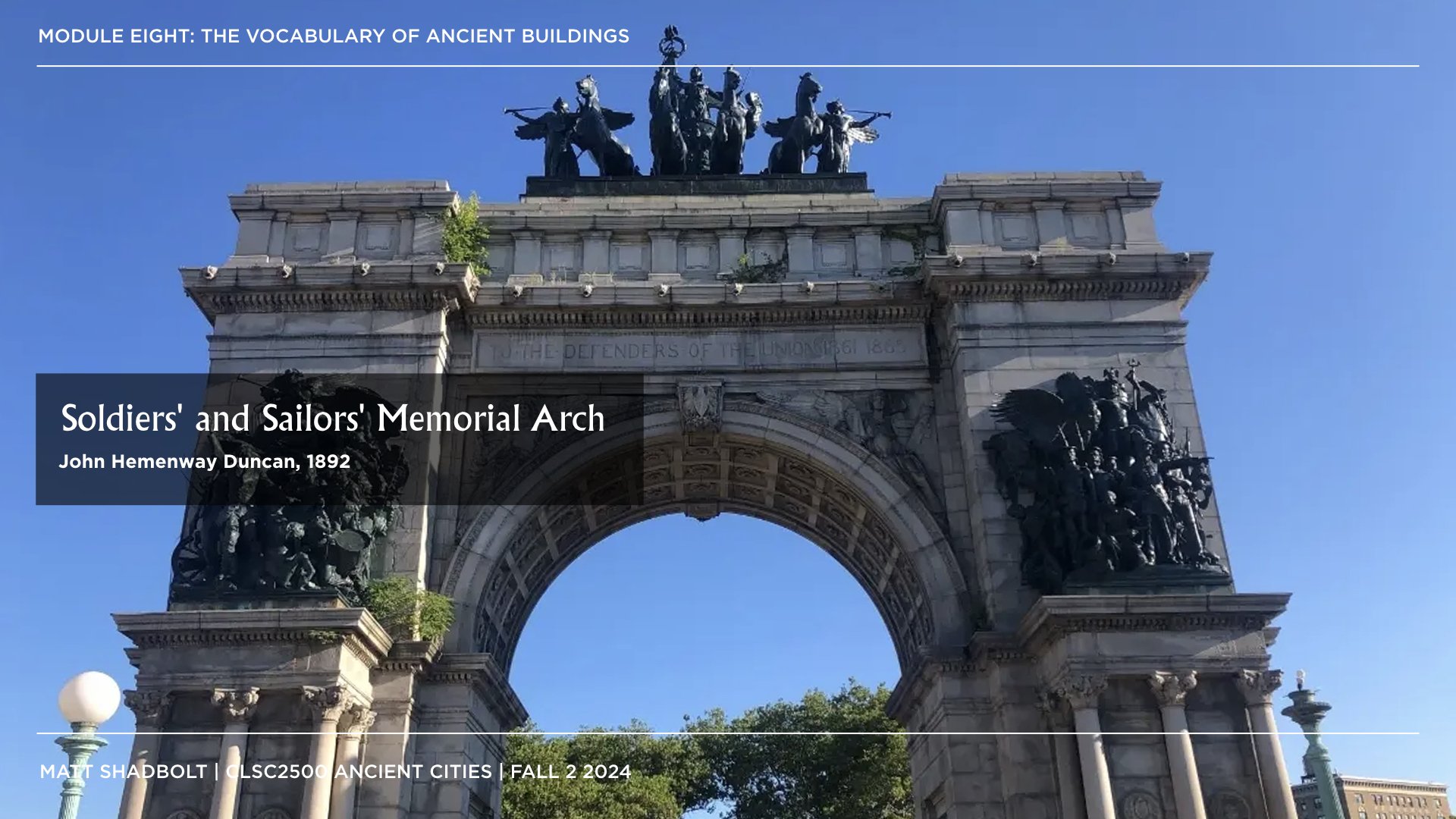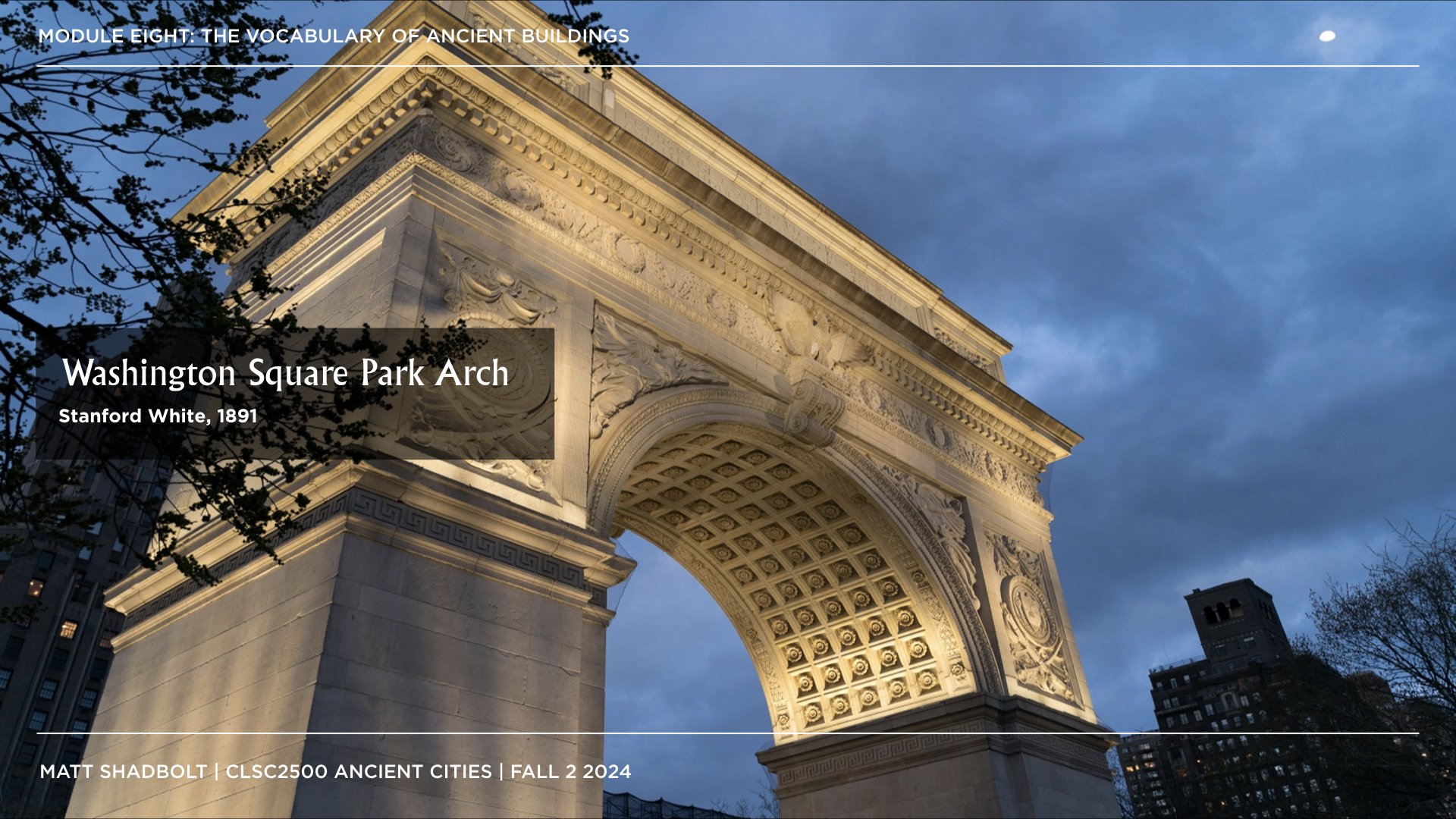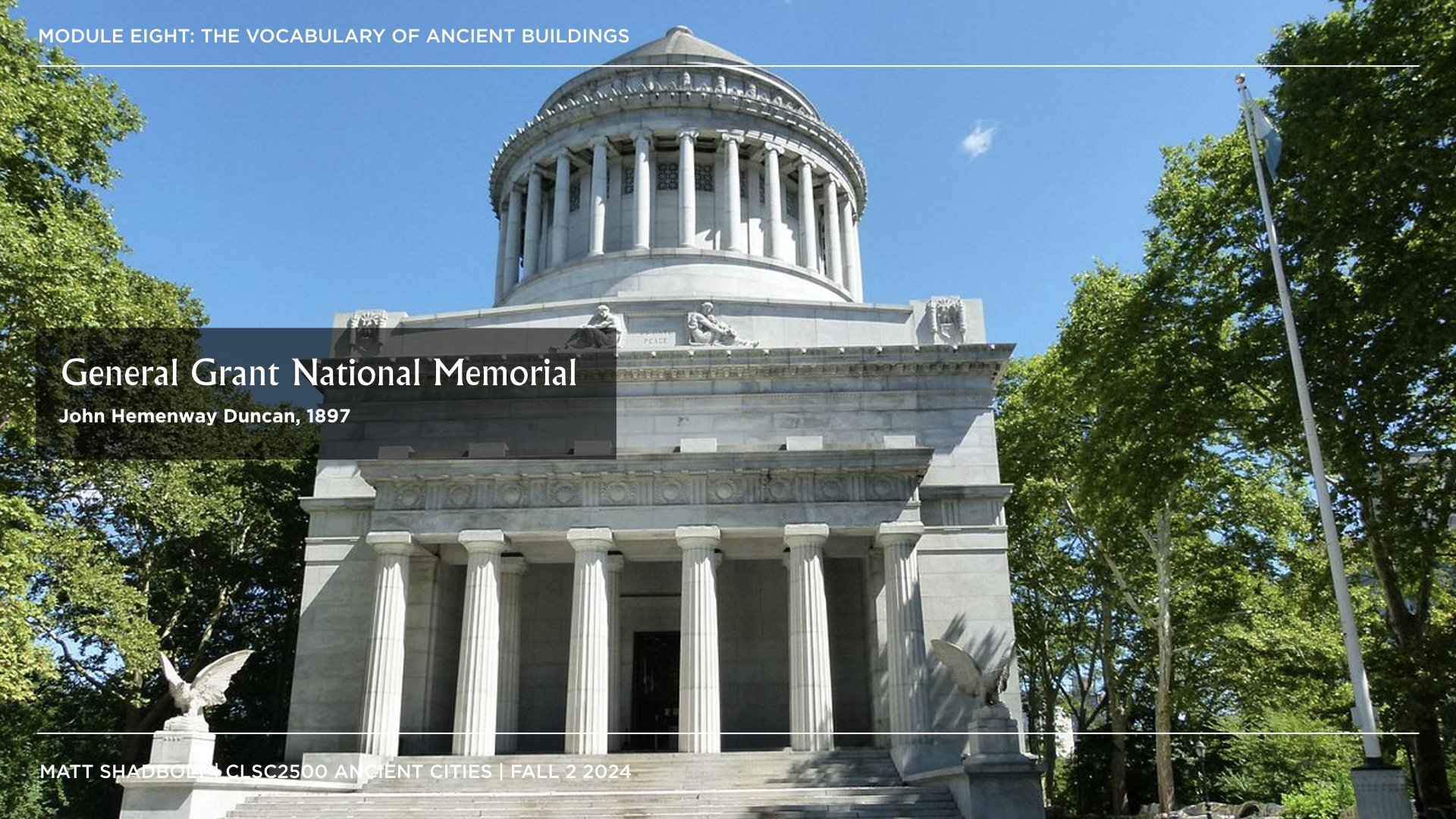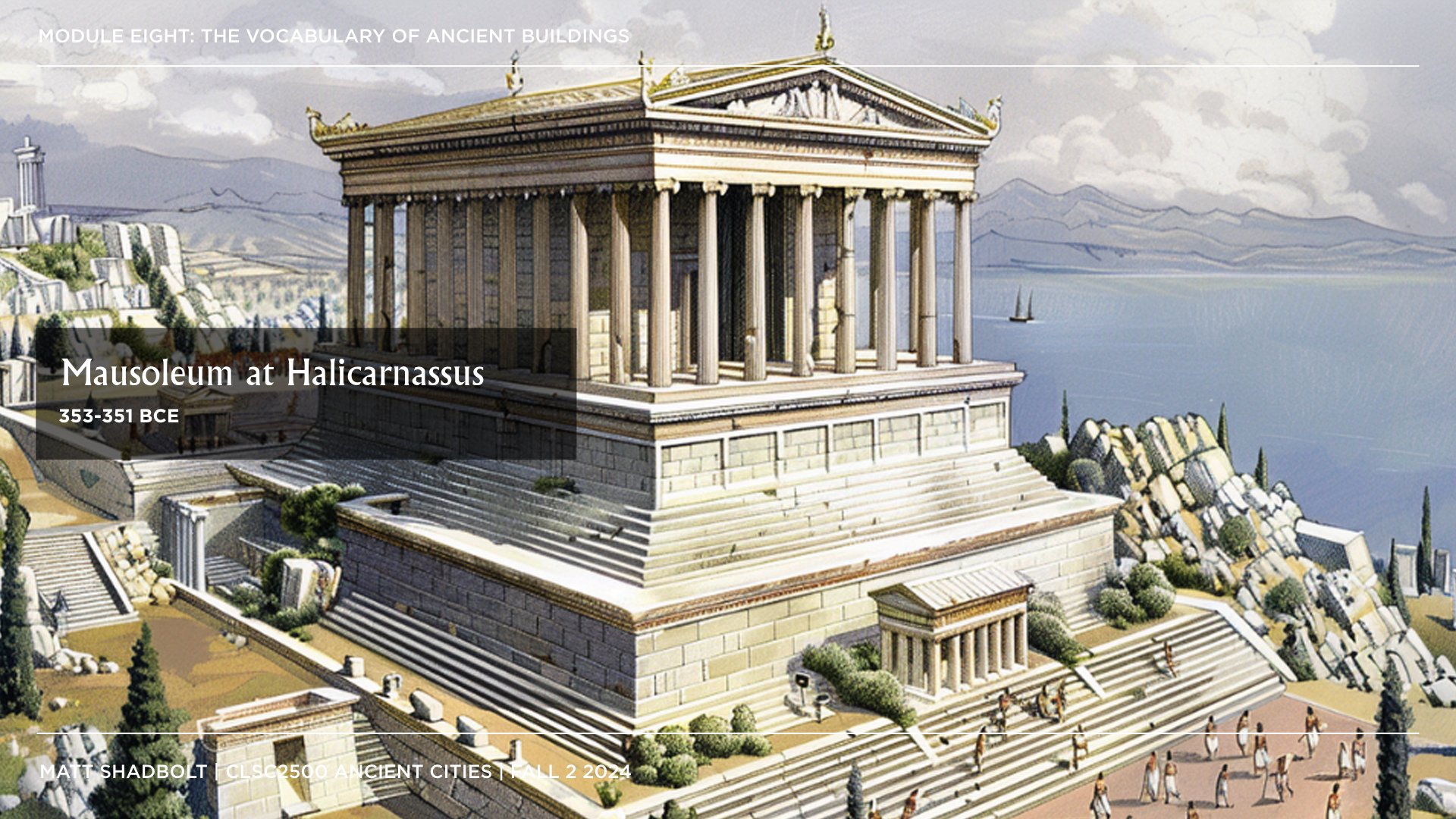Module 8: Have a Look at your Own City
The Rise of Greek Revivalist Architecture in New York City
Greek Revivalist architecture became a defining feature of New York City during the 19th century, emerging as a popular style for civic, cultural, and institutional buildings. This architectural vocabulary, inspired by ancient Greek structures, carried profound symbolic and practical significance for a young nation seeking to establish its identity and values. In Manhattan, the adoption of Greek Revivalism is evident in the city's courthouses, museums, libraries, and schools, where its hallmark features—such as columned facades, symmetrical designs, and monumental scale—continue to leave an indelible mark on the urban landscape.
The popularity of Greek Revivalism in New York is deeply rooted in the historical context of the early 19th century. After gaining independence from Britain, the United States sought an architectural language that would embody its democratic ideals and set it apart from European traditions. Ancient Greece, celebrated as the birthplace of democracy, provided the perfect model. Its architecture, characterized by balance, order, and grandeur, symbolized the virtues of justice, civic responsibility, and intellectual achievement. These qualities resonated with American ideals, making Greek Revivalist design a powerful choice for buildings that represented public institutions and collective aspirations.
One of the most iconic examples of Greek Revivalist architecture in Manhattan is the Federal Hall National Memorial on Wall Street. Completed in 1842, the building’s facade features Doric columns reminiscent of the Parthenon in Athens. This design choice was deliberate, linking the nascent American republic to the ancient traditions of democratic governance. Federal Hall served as the site of George Washington’s inauguration as the first President of the United States, making its architectural style a fitting tribute to the ideals upon which the nation was founded.
Another prominent example is the New York County Courthouse, also known as the Tweed Courthouse, completed in 1881. The courthouse’s Corinthian columns and pediments evoke classical Greek temples, underscoring the timeless principles of law and justice. By adopting this architectural language, the designers sought to convey the permanence and integrity of the judicial system, even amidst political turmoil and the infamous corruption associated with its namesake, William "Boss" Tweed.
Greek Revivalism also found a natural home in cultural institutions like the Metropolitan Museum of Art. While the museum’s facade is more aligned with Beaux-Arts architecture, its columned portico draws heavily from Greek design. This stylistic choice reflected the museum’s mission to celebrate human achievement and connect contemporary audiences to the artistic traditions of the past. Similarly, the New York Public Library’s Main Branch, completed in 1911, combines classical columns with grand staircases and pediments, emphasizing the library’s role as a temple of knowledge and enlightenment.
Practical considerations also contributed to the popularity of Greek Revivalism in New York. Its symmetrical proportions and straightforward design elements made it well-suited to large-scale construction, a necessity in a rapidly growing city. Moreover, the style’s adaptability allowed architects to apply it across a wide range of building types, from courthouses and museums to schools and libraries.
In conclusion, Greek Revivalist architecture flourished in New York City because it aligned seamlessly with the cultural, political, and practical needs of the era. By adopting the architectural vocabulary of ancient Greece, Manhattan’s major buildings conveyed ideals of democracy, permanence, and civic pride, leaving a legacy that continues to inspire admiration and reflection.


